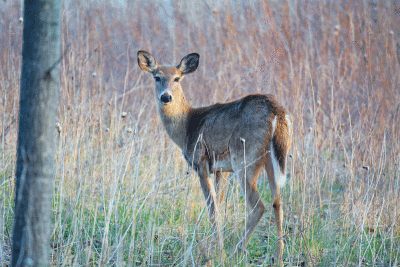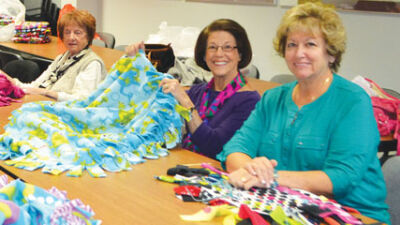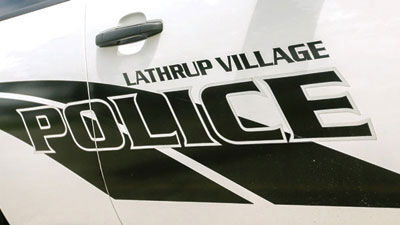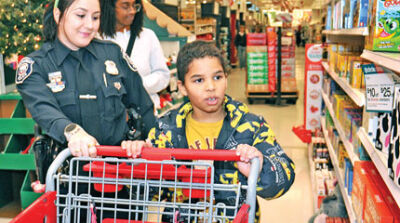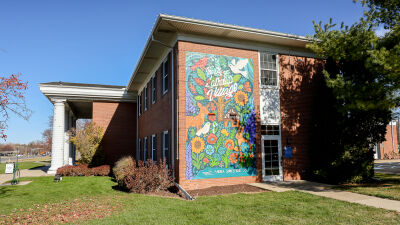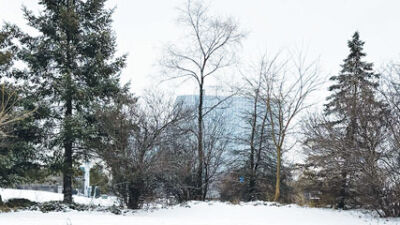SOUTHFIELD — When voters in Southfield were asked on the ballot Nov. 8 whether they were open to the city reducing the deer herd, nearly 20,000 were in favor, while more than 12,000 were against. Now city officials are left to decide what’s next.
The ballot question, which specified that the meat of any slain deer would be donated to local food banks in the event of a cull, was meant to gauge where the public stands on an issue that can be divisive and emotionally charged. With a majority signaling they’re in favor, reducing the herd is back on the table. But whether it will be done — and when, or how — is yet to be determined.
Possible options could include sharpshooters selectively killing deer to reduce their numbers, or sterilizing deer so that they don’t add to the population. Neither option is cheap. Trapping and relocating deer is not an option, however, since relocating them runs the risk of transmitting disease.
Kenson Siver, the mayor of Southfield, said in a phone interview that the deer population is especially high on the west side of the city, where aerial surveillance has observed as many as 80 deer per square mile, roughly four times what’s considered sustainable.
He said that some residents are concerned about the havoc deer can wreak on their yards, eating their plants. Siver noted there are ways to mitigate this, such as by setting up a mesh screen near flower patches, something he said has helped deter deer at his own home where he has seen six of them roaming nearby.
But he said there are other concerns, as well. A booming deer population can pose a danger to itself, as the territorial animals outstrip resources and risk starving one another. As deer consume the forest understory, they may also spread invasive species, destroy wildflowers that pollinators depend on, and shave the bark off trees with their antlers through a process called girdling, which is bad for the health of trees. And then there’s the concern of vehicles crashing into deer.
“We were trying to get people to see a little deeper into the issue,” Siver said of the town hall meeting held on the issue prior to the election. “It’s not simply people upset about their landscaping — it’s much more than that. And the people who don’t want to see the deer culled may not realize that 80 deer in a square mile is not good for the deer.
“This is a very tough issue. If at some point in the future, (Southfield) wants to do a culling, we’re really hoping there’s a regional solution, so it’s not on any one municipality,” Siver continued. “I cannot see our council approving a cull if it’s just Southfield’s alone, because deer do not know municipal boundaries — they travel in the ravines of the Rouge River that runs through Bloomfield, West Bloomfield, Farmington Hills and so on. So it really needs a regional approach. We just wanted to get a better idea (with the vote) of how the community feels about this.”
Chad Stewart is a deer, elk and moose management specialist with the Michigan Department of Natural Resources. He described the complexities of deer overpopulation, including the higher risk of deer-vehicle crashes, agricultural and horticultural damage, landscaping destruction, and impacting the ecosystem by spreading invasive species and destroying plants and nesting spaces.
“There are several lethal and nonlethal options that communities can consider to address deer in their community,” Stewart said in an email. “Hunting and culling/sharpshooting are the two primary lethal means to control deer. Trapping and euthanasia could be a permitted option if a situation necessitates it, but this solution is expensive, labor intensive, and often causes stress to the deer prior to them being euthanized.
“Trapping and transferring a deer is not an option that (the DNR) will consider because survival rates are often very low for transferred deer, and the risk of moving disease around on the landscape could have long-term implications,” he said. “Contraception and sterilization are two non-lethal techniques that are often brought up, (but) it should be noted that the two contraceptive agents on the market currently are not authorized for use in Michigan. Sterilization is rarely used because of the cost and controversy associated with it.”
Stewart said it’s key for communities to hold dialogues on the issue so that they can decide their priorities and set goals accordingly.
“It also helps outline which approaches will get the community there in the quickest, easiest and cheapest way possible,” Stewart said.
The mayor said Southfield will continue to study the issue.
“But if we decide to do a cull, the city will have to budget for it,” Siver said.
 Publication select ▼
Publication select ▼